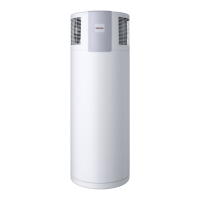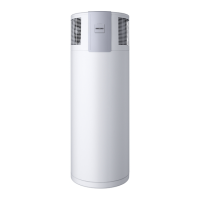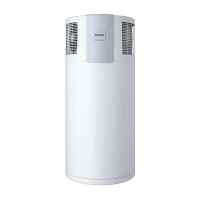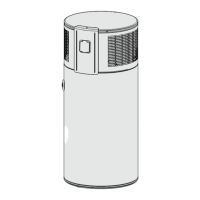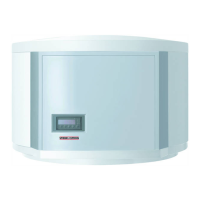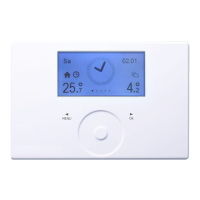4
1.7 Maintenance and cleaning
The device is generally maintenance free,
with the exception of cleaning the con-
densate drain and having an authorised
contractor check the sacrificial anode (as
outlined below).
A damp cloth is sufficient for cleaning
all plastic parts. Never use scouring or
solvent-based cleaning agents.
PLEASE NOTE: Maintenance work,
e.g. checking the electrical safety,
must only be carried out by a qualified
contractor.
z Check at least monthly the condensate
drain at the middle of the unit (see
Fig. 1, number 13) and at the top the
condensate pan drain (visual check,
see Fig.3, pos.15). Remove contami-
nants and blockages immediately.
z For the WWK300AH, it is recommen-
ded that the electric booster heater be
descaled from time to time. This will
result in prolonged life fo the electric
booster.
z Your local contractor, who is familiar
with the local water quality, should
identify for you the timing of the next
service.
z Ask your local contractor to regularly
check the safety assembly and the
electric booster heater.
z The device is subject to mains water
pressure. The expansion water drips
from the safety valve during heat-up.
Inform your local contractor of water
drips from the system after the he-
at-up process has ended.
PLEASE NOTE: The sacrificial
anode must be checked by a
qualified contractor 12 months after
the unit has been installed and checked
periodically thereafter as advised by
the qualified contractor. Failure to do so
may void your warranty.
z To protect the steel cylinder against
corrosion, the interior is coated with
a special enamel and is furthermore
equipped with a protective anode.
Ask your local contractor to check the
protective anode 12 months after in-
stallation and periodically thereafter
as advised by your local contractor. A
sacrificial anode maintenance log is
located at the end of this manual for
your local contractor to fill in.
1.8 Troubleshooting by the user
No hot water
Should you fail to obtain hot water at any
time, you can take the following steps to
remedy that situation.
No electrical power
Check the fuse/circuit breaker in your fuse
box. If it has blown/tripped, replace/reset
the fuse/MCB. If it should blow/trigger
repeatedly, notify your local contractor.
Still no hot water, even though power is
available
Check, whether the air inlet/outlet is
blocked.
The thermoswitch trips out or the high
limit safety pressure limiter switches
the compressor OFF if the compressor
is overloaded due to excessive ambient
temperature or excessive air temperature
(>42°C), or because of a fault in the
refrigerant circuit. Ask your local
contractor to remove the fault.
After a short cooldown phase, the
thermoswitch will restart the compressor
automatically.
!
The high limit safety pressure
limiter must only be reset by your
contractor after he has removed the
cause of the relevant fault.
Other issues
Safety valve of the cold water supply line
drips
This may occur during the heat-up phase
and is completely normal.
The condensate drain drips
This always happens when the surface
temperature of the evaporator is lower
than the ambient dew point temperature.
For all other faults, consult your
contractor.
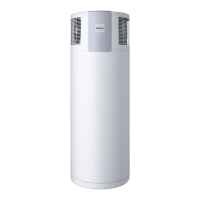
